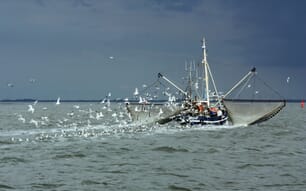The Guardian report found that illegal migrant workers from Asia and Africa were being used as cheap labour on prawn and whitefish trawlers operating out of Irish ports.
Many of the migrant fishermen reported labour abuses such as extreme sleep deprivation, no proper days of rest, no freedom to leave the vessel unless given permission to go on land by their skipper and being paid less than half the Irish minimum wage that would apply if they were legally employed.
Following the release of the report, the Irish Government decided to establish an inter-departmental taskforce to examine the labour abuse issues.
Speaking after the first meeting last week, Irish Minister for Agriculture, Food and the Marine, Simon Coveney, stated: “It is essential firstly to establish a full understanding of the complex issues involved and the meeting today has allowed all the State Authorities to share information on their individual remit and experiences. I want to see a joined up State response. Where appropriate we need to take robust and proportionate immediate actions. We also need to develop any medium term changes to the regulatory and enforcement frameworks of the State.”
In more positive news this week, China's Liancheng Overseas Fishery has become the first longline fishery in China to receive Marine Stewardship Council (MSC) certification.
Similarly, Canada's Gulf Nova Scotia Herring Federation and its member associations also became the first gillnet fishery to be awarded the certification.
In other news, researchers from Norway have discovered a specific gene that plays a very important role in determining whether a salmon returns to spawn as a large or small salmon.
“We have found a single gene that explains a huge 39 per cent of variation in age at maturity in salmon, and thus also in size,” explains Sigbjørn Lien, professor from the Norwegian University of Life Sciences.



